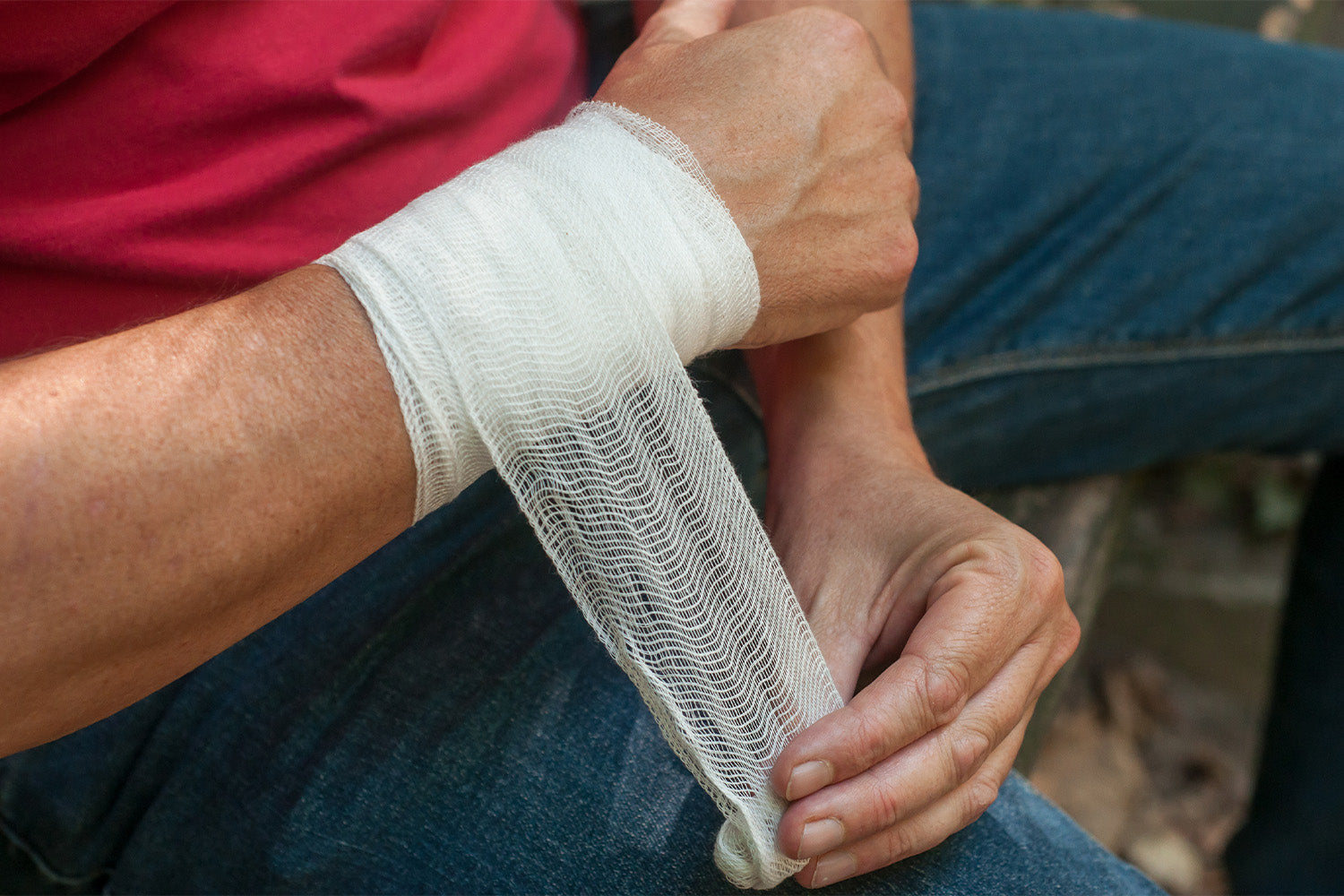Medically Reviewed By | Johannah Gregg, DNP FNP-C
Misdiagnosing an injury is usually the number one way to make the injury worse. Because your ankles are part of your body’s foundation and contribute to its stability, it is vital that you take the right approach to the recovery process to avoid reinjury or discomfort in the future.
A twisted or sprained ankle is one of the most common sports injuries, but if you mistake one for the other, you may overlook the care and attention needed to heal. Although different ankle injuries have similar side effects, it is important that you know the signs to tell them apart so that you can treat your injury properly and find the quickest path to recovery.
How Do I Know If I Have a Twisted Ankle?
A twisted ankle occurs when you bend, turn, or overextend your ankle by landing on it or stepping awkwardly. A twisted ankle can be quite painful but not nearly as painful as other ankle injuries.
A key sign that you twisted your ankle is that the pain does not persist for a long period. When you twist your ankle, you can usually walk afterward with little issue, although it may be slightly uncomfortable.
How Do I Tell If I Have an Ankle Sprain?
An ankle sprain is similar to a twisted ankle, meaning that you landed on it improperly or extended it in the wrong direction, but the injury is more severe.
Still, even a mild sprain can lead to significant discomfort. A sprained ankle means you overstretched or potentially tore the ligaments within the ankle joint.
Symptoms of a sprained ankle include:
- Swelling and bruising
- Severe pain when moving your ankle
- A limited range of motion
- Discomfort when you put weight on it
There are different degrees of ankle sprains, ranging from mild to severe, depending on how badly the ligaments are affected. A severe strain is usually a complete tear of one of the ankle ligaments. If you think you have a severe sprain, it is best to consult a healthcare professional to discuss a treatment program and receive personalized medical advice based on your case.
A doctor can wrap the ankle in a splint for support or guidance. A mild sprain can take around one to three weeks to heal, while a severe sprain can take several months.
How Do I Tell If I Have a Broken Ankle?
If your ankle pain seems more significant than a sprain or twist, your injury might be more significant. A broken ankle bone is the most severe ankle injury you can have and will require the most care and attention to heal.
The two bones just above your ankle are your tibia and fibula, while the bone closest to your ankle joint is the talus.
Signs of an ankle fracture include:
- Hearing a pop or crack when the injury happened
- Extreme pain or throbbing that does not go away
- Intense swelling
- A deformed or crooked appearance
You should seek medical attention immediately if you think you have a broken bone. You cannot treat or accurately diagnose a broken bone from home. Only an x-ray can confirm whether or not you have a broken ankle.
If your ankle is broken, your recovery time will be much longer — usually six weeks with a cast on. If the injury is really bad, you may need an orthopedic surgeon to insert a screw or plate to keep the bones in alignment. Upon healing, a fractured ankle will likely require some physical therapy.
How To Treat an Ankle Injury
If you think you may have a mild ankle injury and are sure it is not a broken bone, you can take steps to treat it from home. The best home treatment for minor ankle sprains is the RICE method, which contains four steps:
- Rest. This should go without saying, but don’t use your ankle for any activity. Try to avoid walking on it at all for at least 24 to 48 hours.
- Ice. Apply ice to the injured area in 20-minute intervals for the first 48 hours after the injury.
- Compression. Use a brace or wrap your ankle with a bandage so that it feels tight but does not cut off your circulation.
- Elevation. Place your ankle on a pillow that allows it to sit above your heart.
With a combination of these steps and enough time off of your ankle, you can recover from home. Remember not to rush the healing process — walking on it will only delay your recovery.
However, if you are having trouble walking on your ankle or supporting your own weight, you should not try to treat the injury from home. Talk to a medical professional about your injury and update them on your recovery process so you can determine if your treatment is working or if you might need more substantial interventions.
In some cases, if the injury is bad enough and long-lasting, you might benefit from physical therapy.
How To Reduce Your Risk of Ankle Injury
The number one way to reduce your ankle injury risk is to increase your ankle joint's flexibility. It helps to stretch the ligaments in your ankles before activity, making them more flexible and more resilient if you misstep. If you often run on rocky terrain or an uneven surface, then stretching your ankles is crucial, as rolling your ankle is far more likely.
Another way to reduce your risk is to use products that can support your ankle, like an ankle sleeve or brace. For example, Incrediwear products use a type of semiconductor technology that helps to stimulate blood flow in the target area.
By increasing the blood flow to a given area, the products help to optimize the body’s natural healing performance and maximize the performance of the muscles in the target area. The increased blood flow makes your ankle stronger and more resilient during activity.
Plus, a brace or sleeve can help provide you with extra ankle support for added stability. This extra support can come in handy by limiting the stress on your ankle during physical activities that require agile movements or repetitive motions.
Support Your Ankles Using Incrediwear
Ankle injuries are common injuries, especially for athletes, so it is important to know the difference between the various types of injuries so that you can begin the proper treatment plan. For extra support in the treatment and recovery process, you can turn to Incrediwear.
Whether you are looking to prevent injury or support the recovery of your injured ankle, Incrediwear can help. Our ankle sleeves offer an easy, effective, and comfortable way to provide your ankles with additional support.
Explore our complete collection of products so that you can see all of the different ways you can support your muscles during your daily routine.
Sources:
Sprained ankle - Symptoms and causes | Mayo Clinic
Recovering from an ankle sprain | Harvard Health
Rest, ice, compression, and elevation (RICE): Method and how it works | Medical News Today
Read more

Medically Reviewed By | Johannah Gregg, DNP FNP-C In our journey towards wellness, understanding and managing pain is essential. Whether acute pain from a recent sprain or a more chronic form of di...

Medically Reviewed By | Johannah Gregg, DNP FNP-C Many different types of athletes are at a higher risk for wrist problems, whether it be an acute injury or a more chronic condition. Tennis players...






Leave a comment
All comments are moderated before being published.
This site is protected by hCaptcha and the hCaptcha Privacy Policy and Terms of Service apply.